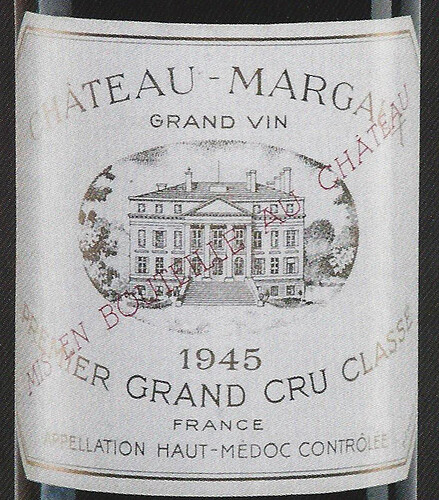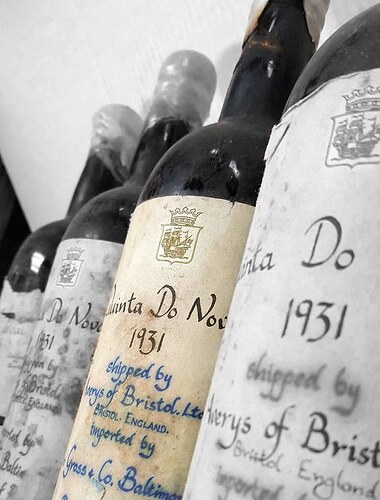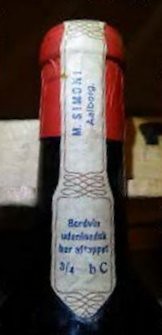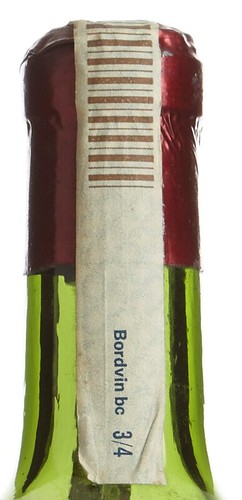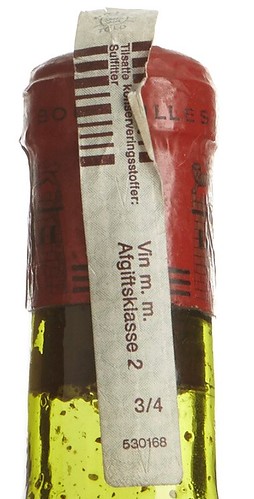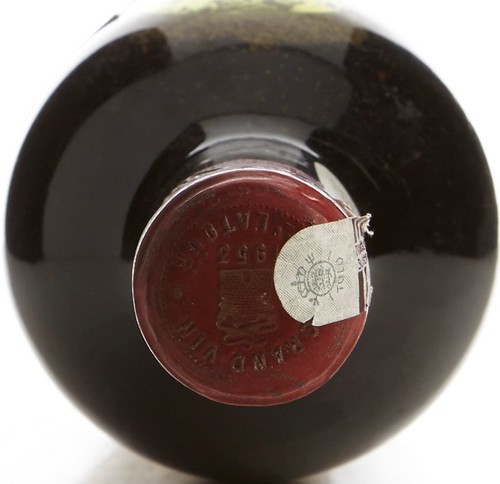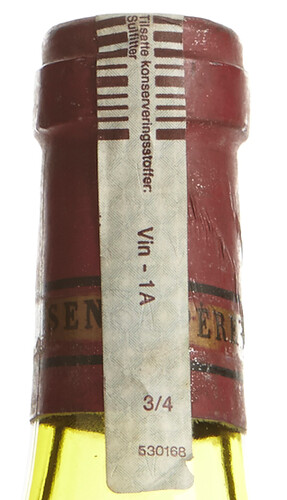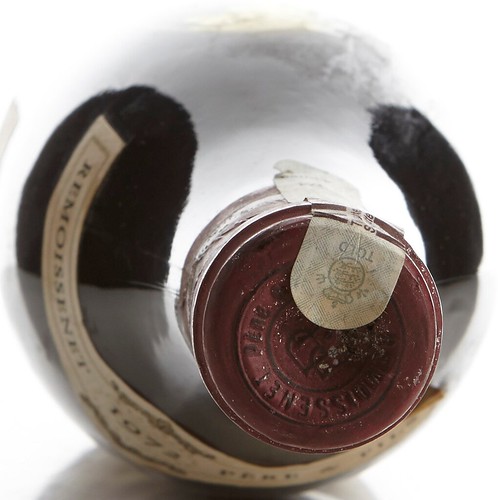Gil Lempert-Schwarz and Dragon 8 Wine Auctions
[As partially corrected in accordance with Post No. 175]
Gil Lempert-Schwarz, who was the person responsible for authenticating wines for Acker in Hong Kong and who was the “expert” (using that term very loosely) for Eric Greenberg in the Koch v. Greenberg litigation, has started a new auction house in Hong Kong called Dragon 8. The business was registerred on July 30 of this year. Dragon 8 is holding its first wine auction in Hong Kong on Saturday, November 21. Here is the link to the pdf catalog for Lempert-Schwarz’s new auction house. http://www.dragon-8.com/AlphaA1/docs/AlphaA1_Final_web.pdf
in the catalog for the auction, Mr. Lempert-Schwarz claims to be the “founder.” He also claims to be the “Principal Auctioneer”, “Content Editor” and “Photographer.” Another Lempert-Schwarz named Uri, who operates a web design and graphic design company called Fluxform and was in charge of the layout and graphics for Acker Merrall’s Hong Kong catalogs, is listed as Dragon 8’s “Editor-in-Chief.” The chairman of Dragon 8 is Danish businessman Søren Grunnet Løvenlund. Mr. Løvenlund is a lawyer, wine collector and co-owner/CEO of White Guide, which is the Scandinavian equivalent to the Michelin restaurant guide. White Guide was started in Sweden in 2004. It reviews both Swedish and Danish restaurants. Søren Grunnet Løvenlund became a partner in White Guide in 2013 and since 2014 is the director/CEO of White Guide.
“The Swedish Nobleman’s Cellar”
The featured consignment for the auction, Lots 1 to 245 in the catalog, is the “Swedish Nobleman’s Cellar.” This cellar has an amazing array of both older wines including first growth Bordeaux from the 1929, 1937, 1945, 1947 and 1949 vintages and newer vintages from great chateaus and domaines, many of which are full cases in their original wooden cases. Mr. Lempert-Schwarz claims to have discovered this previously unknown cellar from “a noble family who once had close ties to the country’s Royal Household.”
As the write up in the catalog explains,
- “In fact, as records show, at one point the King himself had presented several cases of ‘good French drinking wine’ to thehead of the family as a gift for their fine services. Decades later, that wine is recognized as much more than good—for they are cases of Cheval Blanc from the years 1937, 1945 and 1947. Acquired from the Château directly, they are encased in the original wood and have the original Danish Banderoles affixed across many of the bottles.”
The catalog goes on to explain:
- The family buys and drinks wine all the time, so the cellar has become a fabulous repository. All the wines they buy are bought from reputable wine merchants in Denmark and Sweden, who themselves buy directly from European producers, so the condition and provenance is immaculate (with only one stop-over owner prior to ending up in the family cellars). The family keeps incredible logbooks of all purchases and everything is documented, so it was easy to research the provenance of the bottles. It became apparent that the last generation of the family enjoyed going to London wine auctions in the 1970’s and 80’s and while much of that lot has already been consumed, there are some terrific gems left, which we will present today. The present generation might have even gotten a little ahead of themselves and bought really well in the past decade, so there’s room to thin out some of these younger wines as well. Again, those wines are presented here today.
No one in Sweden or Denmark or the rest of Europe believes this epic story. I contacted Danish wine journalists Andre Devald and Rene Langdahl-Jørgensen, who broke the story about the White Club in 2014. I spent many months working with them on the White Club saga. I also contacted the head of the Swedish wine auction authority, Soren Nylund. These gentlemen readily launched into their own investigations, contacting many wine collectors and the representatives of major wine importers throughout Sweden and Denmark as well as the director of the Bruun Rasmussen auction house in Denmark. The long story made short is that no one has ever heard of this collection or the family in question. It was described to me more than once as a “fairy tale.”
I also contacted Michael Egan, who was the authentication expert for the government in the Kurniawan case. I asked Michael to reach out to his contacts in Scandinavia and the rest of the auction community to find out whether this story could be true. Michael wrote back stating: “I have asked some of my sources over here in Europe about the aristocratic Swedish cellar. No one has had any recent contact from a potential noble Swedish vendor or their representative(s). It is highly unusual for a collection like this to go directly to a completely unknown auction house without the vendor approaching at least one well established auction house.”
Andre Devald and Rene Langdahl-Jørgensen began contacting some of the Danish importers, such as Sigurd Müller Vinhandel, the longtime official importer for DRC in Denmark. Using the listed bottle numbers in the Dragon 8 catalog and comparing them with their own sales records, Sigurd Müller determined that one of the bottles included in Lot 195 (3 bottles of 2009 DRC Montrachet) was sold to Kristoffer Meier-Axel, who operates a rare and fine wine business in Denmark known as Weinart. [Note: This entity should not be confused with companies with the same name operating in Germany and Austria.] The CEO of Sigurd Müller called and confronted Mr. Meier-Axel with the information last Friday (Nov. 13). According to Sigurd Muller’s CEO, Meier-Axel stated “oh yes, you are right, that was a fault by me…that bottle went to auction.” My colleagues in Denmark and I interpreted Meier-Axel’s response as an admission that he was the consignor of Lot 195, [and so stated when this was originally posted], but according to Mr. Meier-Axel that is incorrect.
On November 25, Mr. Meier-Axel sent Sigurd Muller an email stating: "I have read on the internet that you [Sigurd Muller] should have sold me 3 bttls of Montrachet and that Weinart should have consigned 3 bttls to Dragon 8. I will state that we did not do so. Weinart bought 1 bttl from you and this 1 bttl I carelessly sold to a foreign customer. This customer might have consigned the bttl for auction in HK (it was as I said to you a fault by me).”
Sigurd Müller also told Andre and Rene that Lot 196, which contained DRC Montrachets from various vintages, included a 2003 DRC Montrachet (bottle No 01527) that had been sold to a Danish collector, but it was not Kristoffer Meier-Axel. The question of how the bottle sold to the Danish collector could end up in the possession of a “Swedish nobleman’s” family is yet another inconsistency in the fairy tale disclosed in the catalog. On the other hand, since Weinart routinely buys and sells rare wines, it is quite conceivable that a Danish collector sold his 2003 DRC Montrachet to Weinart, who in turn sold it to the unidentified consignor of the “Swedish Nobleman’s Cellar.”
Kristoffer Meier-Axel’s name may ring some bells for the readers of this thread. He is known to have bought wines in very substantial quantities directly from Rudy Kurniawan long after the April 2008 Ponsot sale. Some of the records introduced at trial showed that he paid Rudy $509,850 in October and November of 2010. You may also recall that the last email that Rudy wrote a few hours before he was arrested on March 8, 2012 was an email to Kristoffer Meier-Axel, offering him the counterfeit Jayer Richebourg bottles that were found on the photo stand in Rudy’s home at the time of his arrest.
Kristoffer Meier-Axel was also well known to both John Kapon (owner of Acker Merrall) and Gil Lempert-Schwarz. John Kapon is known to have met with Kristoffer Meier-Axel in Copenhagen on multiple occasions. Kapon solicited auction consignments from Meier-Axel and it has been reported to me that Meier-Axel did in fact sell wine through Acker Hong Kong during the past 12 months.
The highly improbable story in the Dragon 8 catalog about the Swedish nobleman was apparently used as a cover to allow the unidentified consignor to sell wines recently acquired from Weinart and/or other unidentified sources, which had no documented provenance, as bottles which allegedly had “immaculate provenance.” Perhaps the story about Swedish nobility and the Swedish King (who serves in a solely ceremonial role) was offered in the hope that it would generate interest in Hong Kong for Dragon 8’s initial auction. But totally misrepresenting the provenance of the wines in the catalog is not the way to start your first auction.
My colleagues and I have looked for evidence in the catalog of counterfeit wines. Most of the “Swedish nobleman” lots are more recent Bordeaux vintages in original wooden cases. There were no obvious problems with these lots. In some instances, because the photos show only the main labels and often cut off the capsules or part of the bottles, the wines were very difficult to asses with just a partial photograph. Nevertheless, we did find two notable lots – one from 1945 and the other from 1949 which appear to be clearly counterfeit. In one instance, that has been confirmed by wine producer. I am concurrently notifying Dragon 8 auctions about what I found with a request that these bottles be withdrawn. I will post about those bottles separately. Meanwhile we are continuing to look at a couple of other lots that seemed questionable.


